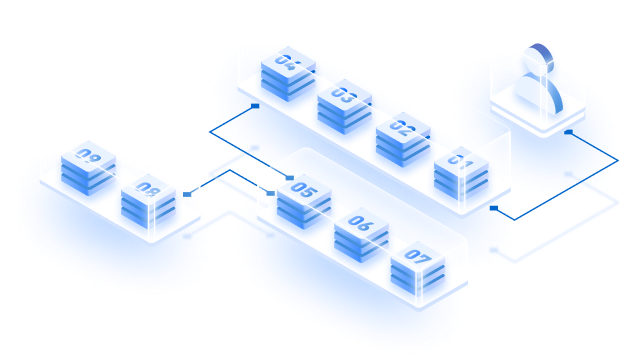While launching your use-cases specific application across gaming, RWAs or DeFi on blockchains, when you face problems like inability to meet unmatched security, sovereign network capability and absolute customization, you wonder why did I even consider blockchains in the first place. Avalanche is all set to make sure that you no longer have to think that way post the Etna/ Avalanche 9000 upgrade.
Under the Etna upgrade, the erstwhile problems as mentioned above that you faced while launching your own chain as subnets will cease to exist. Which means, now you cannot interchangeably use subnets & L1s. On the contrary, it will now be Subnets Vs Avalanche L1s, meaning we might see many projects facing the problems as mentioned above migrating from subnets to L1s in 2025.
But if you are thinking that those projects will have to make a series of adjustments for doing that, such is not the case, because a few things shall remain the same, but if you need some additional functionality, you have to tweak some aspects to carry on the Avalanche ecosystem. In this blog, we shall see what shall be changing and what should remain the same post Etna/ Avalanche 9000 upgrade, that every project whosoever has launched, or who’s planning to launch on top of Avalanche needs to know.

What Is Still Same Between Subnets and L1s?
Though the ETNA/ Avalanche 9000 upgrade has significantly drawn a line between subnets and Avalanche L1s, despite that fact, there are a few things which are more or less similar where you need not have to change.
The first thing is obviously, the core Concept of Custom Blockchains.
Both Subnets and L1s are application-specific, customizable Layer 1 blockchains that operate in parallel to the Avalanche Primary Network (X-Chain, P-Chain, C-Chain).
Alongside this, here are a few more things that will still be the same between Avalanche L1 and Avalanche Subnets.
1.P-Chain Integration for Registration :
Both Subnets and L1s require interaction with the P-Chain for initial registration. For L1s, a ‘ConvertSubnetToL1’ transaction or similar P-Chain transaction is used to set up the blockchain, just as Subnets were registered on the P-Chain pre-Etna.
2.Validator Rewards :
If you are thinking that after the decoupling of the subnets from the L1s, as a subnet validator, now you will be forced to wrap things up. Such is not the case because despite the Avalanche 9000 rollout, the AvalancheGo will not disrupt the means to earn through validation of the P-Chain. To put that into perspective, even from now on, validators will still be earning the rewards validating the P-chain, if they so wish. So, despite subnets vs Avalanche L1s, there’s still scope for erstwhile setup to rollout and deliver.
3.Backward Compatibility :
Existing Subnets can continue operating under the pre-Etna model (with 2,000 AVAX staking) without converting to L1s.
Existing validators on the L1s do not need to convert their pre-Etna validators to L1 validators, they have the discretion to continue as per their previous setup. You might think that since it is a software upgrade, in that case, how can the two ecosystems, which were used interchangeably, execute in the same manner. For this, Avalanche Network will be using the Avalanche Warp Messaging and Teleporter. So, developers will not have to again re-do everything from the scratch, on the contrary, they can simply port the network by giving a series of commands which despite subnets vs Avalanche L1s narrative, will still hold good.
4.Custom VM :
The ability to create custom virtual machines will remain the same as it used to be before the Avalanche 9000/ Etna rollout. However, under Avalanche 9000 upgrade, the customization capabilities will be changing like implementation of the ICM, and Core Wallet System.
5.Permissioned and Permissionless Chains :
Both Subnets and L1s support permissioned (private, e.g., for enterprise use) and permissionless (public, e.g., for DeFi or gaming) configurations, allowing developers to control validator participation based on their needs.
They both can use AVAX as an optional fee currency also. Now let’s see how they are different when you are evaluating subnets vs Avalanche L1s.
What Is Different In This Avalanche L1s Vs Subnet Debate?

1.Conceptual Shift:
Subnets of the Pre-Etna Era were referred to as Subnetworks. They were application-specific blockchains tied to the Avalanche Primary Network (X-Chain, P-Chain, C-Chain) and required validators to stake on the Primary Network.
Whereas, L1s in the Post-Etna era are called Avalanche L1s. These are now sovereign Layer 1 blockchains with greater independence from the Primary Network. The term “L1” emphasizes their status as standalone networks within the Avalanche ecosystem which brings the subnets vs Avalanche L1s war to reality.
2.Cost To Launch L1s To Reduce by 99%
Launching a Subnet required significant upfront costs (e.g., up to $450,000 for validators staking 2,000 AVAX each), limiting adoption to well-funded projects.
For L1s, deployment costs are reduced to nearly zero, with validators paying ~1.3 AVAX/month. This has led to a surge in L1 development, with hundreds of L1s on the Fuji testnet and new launches like Beam chain validator (gaming), and COQNet (meme-to-chain).
It is almost 99.9% lesser than what you would have otherwise spent launching as a subnet.
🔺 Our Biggest Network Upgrade Has Arrived!
— Avalanche Foundation 🔺 (@AvalancheFDN) December 16, 2024
Avalanche 9000 introduces the Etna upgrades to Mainnet, ushering in a new era for developers and users on Avalanche.
• 99.9% reduction in L1 deployment costs & 96% drop in C-Chain fees
• Spin up L1s quickly using the Primary C-Chain… pic.twitter.com/6JDUGgEb3x
3.Hardware Requirements To Flip:
When you are launching a subnet before the Etna upgrade for a sovereign blockchain experience, you required the following hardware CPU: 16-core or more (high-performance, modern CPU)RAM: 32–64 GB Storage: 2 TB NVMe SSD (consider RAID if hosting multiple subnets) Network: 1 Gbps fiber connection (especially for custom or high-TPS subnets).
But after Etna, to launch a sovereign blockchain or L1s, you need CPU: 8 cores RAM: 16 GB Storage: 1 TB NVMe SSD Bandwidth: 100 Mbps up/down OS: Ubuntu 20.04+ or similar. So earlier you need heavy compute, but now the subnets Vs Avalanche L1 game is going to get simplified for those who have earlier found it hard to launch as L1s.
4.Validator Management Changing:
In the Avalanche ecosystem, before the Avalanche 9000/ Etna Upgrade, there was no provision to decouple the validators from the Primary/ P-Chain Network. Which means, a subnet validator had to simultaneously validate for their own native chain/ aka subnet, along with the main P-chain. But that narrative is changing because now you have the concept of elastic subnets/ L1s. Why?
Because of the post Avalanche 9000 upgrade, you are getting a validator management option ready for your chain. Now the L1s can manage their own validator sets, which are completely separate from the P-Chain. All they need to do is just set up their Blockchain ID, or their own L1 ID and assign the address of their validator manager. Once that is done, the P-Chain will create a WARP message and decouple the validator of the L1s chain from the P-chain.
In this way, now L1s can easily manage their own validator network. The trade-off has been such that suddenly more than 1400+ L1 validators have joined the network due to validator management options available post Etna.
And to become decentralized with more distributed validators is economically and technically viable also making Avalanche more distributed and secure after Subnet Vs. Avalanche L1s decoupling from one another.
L1 validators on @avax continue to grow, now surpassing 1,400 after the Avalanche9000 upgrades—more L1s, more validators! 🔺
— Avalanche Foundation 🔺 (@AvalancheFDN) March 8, 2025
See for yourself ➡️ https://t.co/Y7kb2zrQiM pic.twitter.com/NSOsoZwsGh
5.New Tools For L1 Blockchain Creation
Subnets had limited structured funding programs for Subnet development, with higher costs deterring widespread adoption.
Now, you can get a $40M in AVAX retroactive reward grant, InfraBUIDL, to launch your own L1s or build tools for it. Due to the same, new projects which had earlier faced economic barriers to launch their own L1 chains can quickly, or build supported tools, do that now using additional developer incentives, tooling, community incentives, and the core browser hub which the subnets vs Avalanche L1s decoupling has introduced.
6. Gas Token Flexibility:
Subnets could use AVAX as the default gas token, though custom tokens were possible with additional complexity.
In L1s, explicit support for custom gas tokens with simpler implementation via ValidatorManager contracts is enabled. This reduces the dependency on AVAX for transaction fees which has made L1s attractive for those who want micro transactions like AI models . However, validator fees remain AVAX-denominated despite the Subnet Vs Avalanche L1s rebranding.
7.More sophisticated Compliance & Geo-restrictions Config:
This is the new feature which will be integrated with the L1s, which was absent in the subnets. Because unlike in subnets, where in order to set up the compliance and geographical restrictions, developers needed extreme level technical expertise, with the new L1s post Etna, the developers are not required to do the same. The Wyoming Stable Token (WYST) project is a perfect example to quote here because the project shifted to a dedicated L1 from a subnet to get the feature. Under L1s, now it is very easy to launch complaint chains and so far more than 9 have joined the run due to the simplicity delivered.
The @avax ecosystem is getting stronger every day. 9 new L1s joined in Q1, bringing the total to 32 L1s all sharing liquidity thanks to Avalanche9000.
— Matthew Nay (@NaytheForceBwU) May 28, 2025
Key Insights from Q1:
– Avg DAAs across C-Chain and all L1s increased 81% QoQ to 167.3K. Led by @lamina1official growing avg… pic.twitter.com/2Cy5Fgiti4
Build Your Avalanche L1 with Cogitus by Zeeve
To build your DeFi, RWA, DePIN, AI x crypto, or even general-purpose L1, you don’t have to sweat from scratch. Rather, Cogitus, powered by Zeeve , can help you have a low-code, 1-click deployment to launch a fully functional, modular testnet at just $50. You can launch the mainnet with 40+ 3rd party integrations in the minimum possible time, zero downtime and data loss.
Moreover, Cogitus ensures performance, reliable security, and uptime for your Avalanche L1 through a default 24/7 network monitoring setup designed for efficient resource monitoring. For more information about Cogitus’ Avalanche L1 offering or Zeeve’s comprehensive appchain service, connect with our experts. Send your queries via mail or schedule a demo to understand how Zeeve’s low-code deployment tool for Avalanche L1 works. We are always eager to help you launch your own Avalanche L1 in a flash of a second with zero hassle whatsoever.





